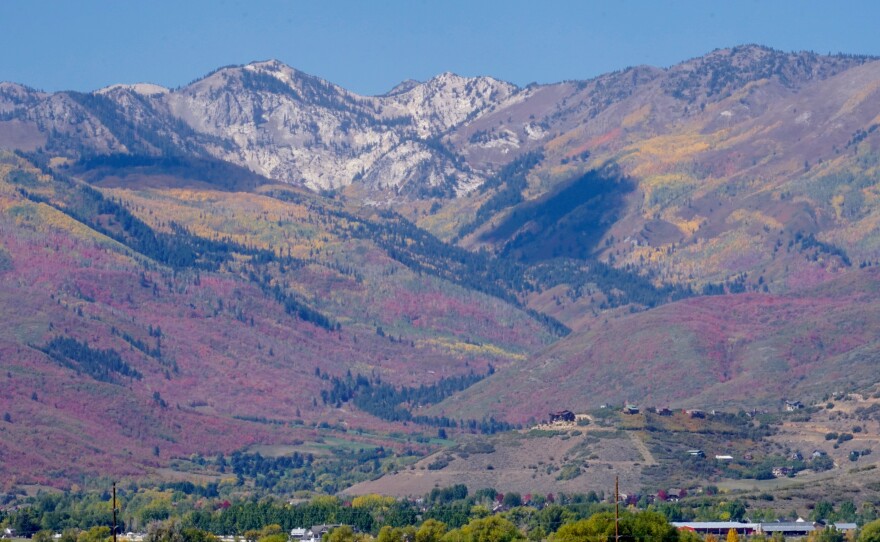If some people expected bland fall colors to follow the drought over the summer, the trees had other plans.
To the delight of Wasatch Back leaf-peepers, the leaves on various tree types changed to vibrant colors over the past couple of weeks. During hikes, runs or mountain-bike rides, or just viewed out car windows, locals are loving the mountainside tapestries.
While changing leaves aren’t an exact science, the recent rains could have come at a perfect time to make the colors really pop this year.
“We had that late, really heavy rainfall in August,” said Maegan Lewis, a horticulturist for the Utah State University Extension in Summit and Wasatch counties. “I’m wondering if that energized the trees a little bit and helped them to have those brighter colors.”
Leaves change in fall when the days get shorter. When the trees sense the change in season, it’s an “automatic trigger” to pigmentation changes in the leaves.
Later, when the leaves die and drop off, the trees are able to conserve nutrients.
According to Lewis, the color variation that occurs from year to year depends on how long the days last, combined with overnight temperatures. Along with the rain, this year’s warm, sunny days and cool nights were especially conducive to bringing out the colors.
“We haven’t had our traditional, really early frost this year. When we have an early frost, that can really damage the leaves and cause them to turn brown early. But because we had a later frost, we’ve really been able to drag out this color with those bright pinks, reds and purples,” she said.
The most noticeable change happens with the departure of chloroplast, which is what makes leaves green during the warm months. That’s when carotenoids, which are present year-round but masked by the dominant green color, bring out a golden-yellow hue.
The stark yellow is especially visible in Aspens. Maples and Dogwoods get a new reddish pigment from anthocyanins with the onset of cold weather.
From afar, the combinations of these colors create diverse and complicated patterns. Aside from how much daylight individual trees receive, Lewis said their levels of water and nutrient intake impact how much chloroplast they carry.
Now that there have been some frosts, the period of most extreme color is past, and the trees are now transitioning into winter-survival mode.
“Just as part of the cycle, trees create these cells where the leaf connects to the branch, and they basically break off their own leaves just to protect themselves, because if those leaves are staying on the tree for too long, then they can pull a lot of nutrients from the tree, but what we want to do is push those nutrients down into the root. So, they’re basically protecting themselves. It really wouldn’t benefit the tree to have the leaves on any longer,” Lewis said.
As an associate professor, Lewis teaches monthly classes based on USU research, which are mostly free and available to the public. To find out more, visit extension.usu.edu.








